
Fast, affordable Internet access for all.

The New York State Bridge Authority (NYSBA) expects to bring in over $900,000 over the course of the next ten years in revenue from dark fiber leases. The agreements, which allow private companies to access publicly owned dark fiber spanning the bridges, will also help maintain low tolls and allow regional telecom operators to expand their data transmission networks. The NYSBA announced on August 4 that it would be leasing dark fiber on two new bridges - the Bear Mountain and Rip Van Winkle bridges in upstate New York. These will be the third and fourth NYSBA bridges that generate revenue from fiber leasing.
The NYSBA dark fiber leasing program is now in its fifth year. Since the Authority does not receive any state or federal tax money for the operation and maintenance of its bridges, it has sought creative solutions to finance the upkeep of its infrastructure. It has now leased dark fiber on four of five intended bridges, with plans to lease more on a fifth - the Kingston-Rhinecliff Bridge - in the near future.
In March, the Authority leased the Newburgh-Beacon Bridge to QCSTelecom, Inc. for $535,000. While such dark fiber leases are one-time fees, and usually last for at least ten years, the immediate benefit to the community takes the form of lower tolls for everyone who crosses the bridge. One editorial, posted in the Daily Mail, considered the locally-scaled benefits of the project:
Locally, we don’t have much to worry about from another toll hike in the immediate future. Although the lease won’t replace tolls as a principal source of revenue, it will help the bottom line and help keep tolls at current level. It’s clear that getting to the other side of the Hudson River can be costly over time and, as energy and transportation costs rise, we are not prepared for another toll hike. But with the success of the dark fiber leasing program, now in its fifth year, we can believe with some certainty that the drive to Columbia County won’t cost more.
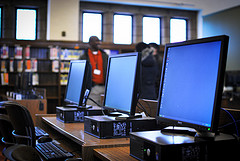
Community Anchor Institutions, such as public libraries and schools, are among the first places people go to access the Internet when they cannot access it at home. With 30% of the United States without a broadband connection at home, libraries and schools are essential for access to social services, job applications, and digital learning tools. These institutions, however, may not themselves have the capacity to meet the increasing demand for Internet access.
That can be a really big problem. With many states requiring online testing, schools need to have adequate bandwidth, so that networks do not crash at key moments. Some schools have to ration Internet access - while some students are testing, no one else is allowed to use the Internet. This means no video-streaming educational videos or remote learning classes while testing takes place. Educational opportunities shrink as students and teachers have to forego the most up-to-date online resources because of this bandwidth shortage.
The major barriers to high quality Internet access for community anchor institutions are cost and availability. National carriers like AT&T often do not provide the needed capacity at affordable rates. Municipal networks, however, are locally controlled and attuned to local needs. They treat community anchor institutions like a fundamental building block of society, not a profit center to be exploited.
72.2% of libraries help patrons access employment databases, and 58.8% of libraries face budget constraints when increasing their bandwidth.
63% of schools do not meet the ConnectED Current Goals for high speed connectivity which impacts nearly 40 million students in grades K-12.
-- Education SuperHighway’s Connecting America’s Students: Opportunities for Action
The federal E-rate program provides more than $2 billion in funding each year to support Internet access at public schools and libraries. The E-rate program, however, does not go far enough in helping these entities achieve high-capacity, reliable, and affordable Internet access. In too many cases, E-rate simply helps schools and libraries to afford connections priced at exorbitant levels from national carriers. Below, we detail the many benefits of local governments connecting their own community anchor institutions with self-provisioned networks - often called “institutional networks” or "I-Nets".
Learn more
Keep up to date with all things community broadband by subscribing to a once-per-week email with stories about community broadband networks.
Internet access is already crucial for community anchor institutions and will only become more important as society continues to incorporate technological advances into every aspect of life. Self-provisioning often results in higher capacity connections that are more reliable, and most importantly for local budgets, much more predictable in terms of future costs. Operating an institutional network, communities can plan years in advance for upgrades and have greater security in long term budgeting rather than worrying about the incumbent provider raising rates.
For example, Martin County in Florida had been leasing lines from Comcast to connect the schools and public buildings, but its 10-year franchise agreement was about to expire. With Comcast demanding a stunning price increase, Martin County instead built an underground fiber network with much more redundancy than Comcast offered. Compared to leasing lines, Martin County expects to save an estimated $30 million over the next twenty years. Now Martin County does not fear rate hikes or unexpected outages from Comcast’s network.
In talking with some schools that have transitioned from leased lines to operating their own network, some have reported that network management requires less staff time because the modern technology behind a wide-area network largely runs itself. If something goes wrong, staff have the information they need to diagnose and repair rather than having to wait on hold for a CenturyLink call center to begin investigating a problem.
This chart of five different school districts across the U.S shows some of the savings schools have experienced with municipal networks. The orange is the original provider’s exorbitant price for each Mbps per month. The blue is the price from the municipal network. The savings are stunning.
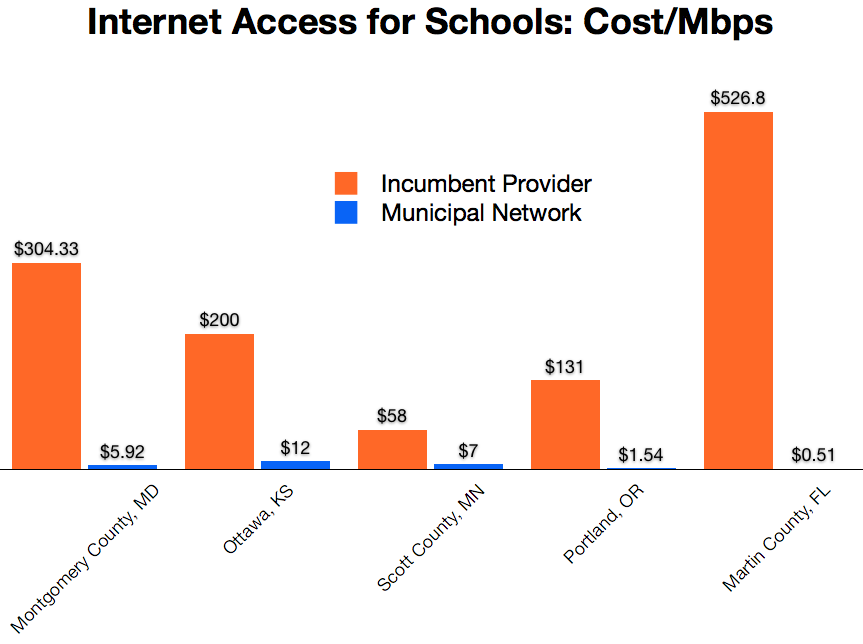
Sources for the graph
MuniNetworks Public Savings Fact Sheet and Breaking the Broadband Monopoly
For more information about costs and savings, dig into these examples of savings to community anchor institutions:
Ammon, Idaho: municipal network lowers prices, increases capacity for schools after State Education Network dispute with CenturyLink disrupts service.
Ottawa, Kansas: the schools save $3,000 a month and get double the bandwidth.
Staunton, Virginia: the schools used to pay $2,000 a month just to lease fiber, but now they’re connected for free.
Increased Capacity, Expanded Services
Libraries and schools have used the increased Internet capacity of some municipal networks to expand services and enhance their educational materials. Rural districts can use remote instruction via video-streaming to offer more foreign language and science classes. Communities have crafted innovative programs for students to explore how high-speed Internet access can be used in the classroom for more individualized and self-paced learning. These educational experiences cannot be achieved without high-capacity Internet access.
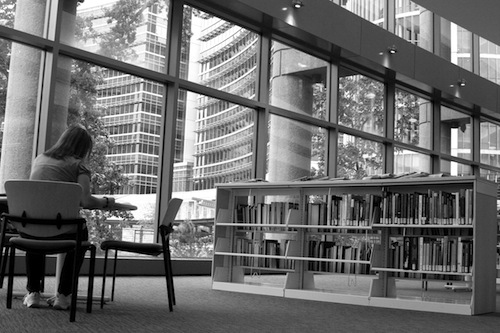
Southwest Georgia: some schools are leveraging the better Internet access to bring STEM education, such as live interactive science demonstrations, to students in rural classrooms.
Chattanooga, Tennessee: the public library has dedicated an entire floor as a maker space, encouraging entrepreneurship and the latest technological innovations.

Expansion Beyond Institutional Networks
One of the many benefits of institutional networks is that communities can use the assets and knowledge from building those connections for economic development and other policy goals. For instance, when building the fiber to connect schools and libraries, smart communities install extra fiber that can be used to connect local businesses or form the backbone of a citywide network in the future if that becomes feasible. Many local governments have found that after building a high-speed institutional network, local businesses clamor for access as well.
Santa Monica is a great example of a community that started by self-provisioning community anchor institutions and has gone on to create many benefits for businesses and residents with both the savings and assets from the municipal network.
Without incurring any debt, the city built an expansive fiber network. They started by connecting municipal buildings and community anchor institutions with a $530,000 investment. Then, they expanded the network through grants for intelligent traffic systems and the savings from discontinuing expensive leased lines.
The city saved $400,000 the first year and $700,000 each subsequent year. With the extra fiber, Santa Monica provides better Internet access to local businesses and leases fiber to other service providers. The money from the municipal network is reinvested in the community, encouraging economic development. See our case study for more details.
To learn more about the benefits of community networks providing Internet access to libraries and schools, check out our multimedia resources.
Community Broadband Bits Podcasts
These podcasts aim to be around 20 minutes long and feature issues related to libraries and schools.
| Episode | Title | Synopsis | Guests | Transcript |
| 79 | Don Means on Libraries and White Spaces | Explanation on TV white spaces wireless technology | Don Means | Transcript 79 |
| 71 | Education SuperHighway Wants Better Broadband for Schools | Education SuperHighway's approach to ensure better Internet connection to all schools and the role of community to achieve this goal | Evan Marwell | Transcript 71 |
| 46 | North Georgia School Brings Gig To Schools, Jobs to Region | The origin of the North Georgia Network and its economic and social impact on the region | Paul Belk | Transcript 46 |
| 43 | Carroll County Explains Many Benefits of County Owned Fiber | How Carroll County Public Network started and the benefit its community network provides | Gary Davis | Transcript 43 |
| 39 | Moultrie City Manager Discusses Origins of CNS Network in Georgia | The origin of CNS network in Georgia and the benefits of the network for local schools and community savings | Mike Scott | Transcript 39 |
Conferences, presentations, hearings, and other research
Looking for even more information about libraries, schools, and Internet access? Here are archives of conferences, presentations, hearings, and other research.
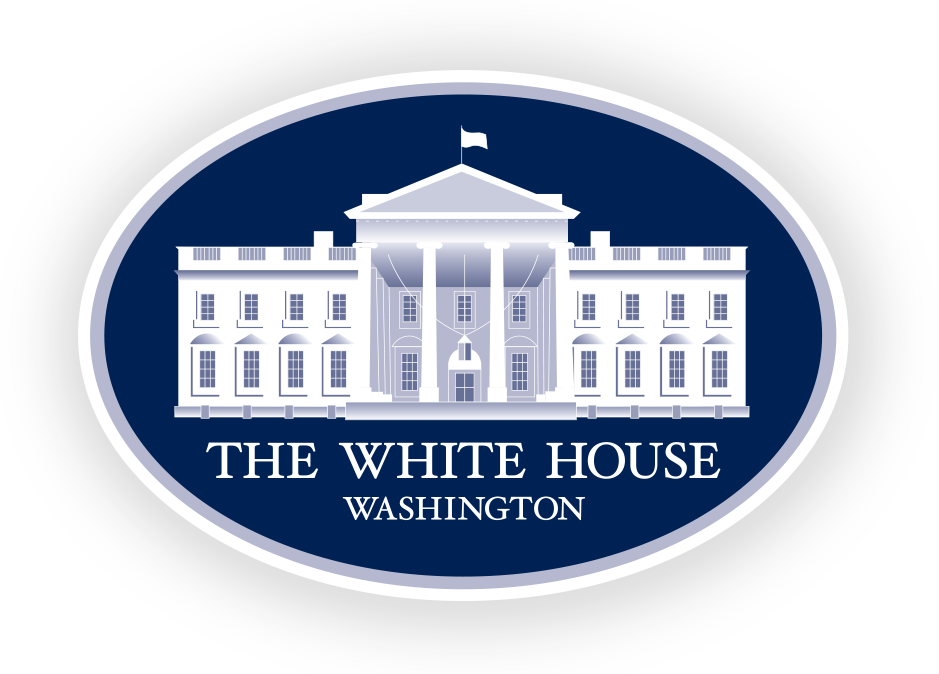
Community-Based Broadband Solutions Report PDF January 2015 The Executive Office of the President
The White House report features the savings to schools and libraries provided by locally controlled community networks.

Connecting America’s Students: Opportunities for Action Report PDF April 2014 Education SuperHighway
This report examines E-rate spending and underscores the importance of Internet access in schools. The report attempts to answer why the connectivity gap persists and provide solutions to increase Internet access.
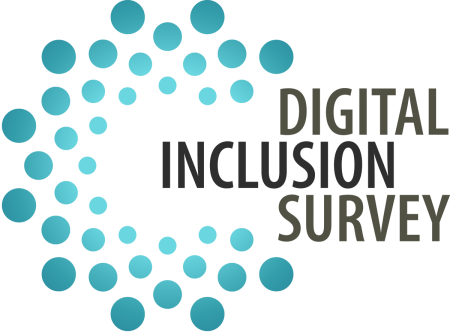
2013 Digital Inclusion Survey of Libraries digitalinclusion.umd.edu From the University of Maryland Funded by the Institute of Museum and Library Services
Each year, the University of Maryland releases a survey of digital information services that libraries across the U.S. offer. The reports highlight inequities in Internet access and the changing role of libraries.
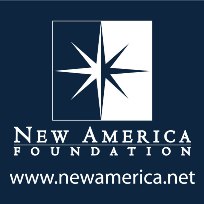
Connected Communities in an Age of Digital Learning: a Vision for a 21st Century E-rate Program Video Archive February 27, 2014 New America Foundation
This webcast concerned the modernization of the E-rate program and increasing Internet access at libraries and schools. Featured speakers included representatives from the Institute of Museum and Library Services, the U.S. Department of Education, New America’s Open Technology Institute, the Albemarle County (VA) Public Schools, and the Richland Library (SC).

Schools, Health & Libraries Broadband (SHLB) Coalition www.shlb.org
The SHLB is a nonprofit organization formed in 2009 to support affordable, high-capacity broadband at anchor institutions. They develop and promote policies and programs that further connectivity in communities.

National Association of Telecommunications Officers and Advisors (NATOA) www.natoa.org
A professional association of telecommunications officers and advisors that deal with communication policies and programs in local governments.
Photo of library computers courtesy of the Knight Foundation
Photo of library headquarters from the public domain
On July 21, the City Council of Sun Prairie, Wisconsin passed a resolution to fund construction on a segment of what could become a citywide, high-speed fiber optic project. Construction will take place in the city’s Smith’s Crossing subdivision, parts of Main Street, and the Tax Increment Finance (TIF) District 9/St. Mary’s development area. It is slated to begin in early September and last through December 1, weather permitting, and will cost an estimated $640,000.
The mayor of Sun Prairie, Paul Esser, believes that going through with this project is the correct move for the City. He was recently quoted in the Sun Prairie Star:
Moving ahead with the pilot project in Smith’s Crossing is the right way to go. I believe that as an early adopter of this technology we will have an economic development advantage which will attract companies that require this broad bandwidth.
The fiber-to-the-premises (FTTP) construction at Smith’s Crossing is seen as a testing ground for a larger FTTP network construction that would extend 200 miles of fiber and have the potential to connect all of the city’s homes and businesses. Currently Sun Prairie has about 30 miles of fiber. If Sun Prairie can successfully build out this citywide network - costing an estimated $26.7 million for the whole city - it could rival that of Reedsburg, Wisconsin, which began construction on its fiber-to-the-home network in 2003. Reedsburg has seen numerous economic development benefits and has created a considerable amount of community savings from lower prices.
The city of Sun Prairie initially invested in fiber optic technologies in 1999. In that year, the City built a fiber ring for the school system. Rick Wicklund, the manager of Sun Prairie Utilities, estimates the fiber ring will save the school $2 million by 2019. The fiber also runs to about 28 businesses and more than 130 Multiple Dwelling Units (MDUs), according to Wicklund. Now, Sun Prairie Utilities is looking towards residential markets.
Located at the foot of Mount Hood in Oregon, Sandy's municipally-owned full fiber network offers gigabit Internet service for under $60 to every resident in the city. Sandy is one of the few municipal FTTH networks that has been built without having a municipal electric department.
The Institute for Local Self-Reliance released this short video this week about the city’s approach—it should be a model for others who want faster Internet, but remain paralyzed by the big telecom monopoly stranglehold.
City managers, frustrated that they couldn't even get a DSL line in to City Hall started off by building their own wireless and DSL network, beginning in 2001. Today, 60% of the community has already subscribed to the Fiber-to-the-Home network, or is on a waiting list. View the video below, or on YouTube here.
Be sure to check out our report on Sandy, SandyNet Goes Gig: A Model for Anytown, USA.
Changes in leadership in Chanute have put the community's FTTH plan in suspended animation. In April, the City Commission decided to delay financing shortly before the scheduled bond sale. It is unfortunate that residents and businesses will lose the opportunities the fiber deployment would bring. Nevertheless, they deserve the right to make their own choices, good or bad.
The community of Chanute deployed a network incrementally with no borrowing or bonding in order to improve efficiencies, save public dollars, and control connectivity for municipal facilities. Local schools and colleges, struggling to compete, began taking advantage of technology in the classroom and expanded distance learning. The network eventually created a number of economic development opportunities when community leaders started providing better connectivity to local businesses. We told Chanute's story in our 2013 report "Chanute's Gig: One Rural Kansas Community's Tradition of Innovation Led to a Gigabit and Ubiquitous Wireless Coverage."
Chanute made history when it was the first municipality in Kansas to obtain permission from the Kansas Corporation Commission to issue bonds for the project. They also became the first municipality in the state to seek and receive "eligible telecommunications carrier" (ETC) status. Chanute was awarded over $500,000 in Rural Broadband Experiment Funds from the FCC. Whether or not they will still be able to take advantage of those funds remains a question. After taking action and putting so many of the necessary pieces in place, it is disheartening to see the plan abandoned by politicians.
Regardless of the future of the FTTH project, Chanute has the infrastructure in place to encourage more economic development, connect community anchor institutions, and allow the community to control its own costs. The FTTH project is still a possibility.
Last summer the community of Brentwood began working with Sonic.net in a plan to use publicly owned conduit for a privately owned fiber network. Earlier this month, the partners celebrated completion of part of that network and officially lit-up the first residential neighborhood served by Sonic.net's fiber gigabit service.
The Mercury News reports that residents are much happier with the new Internet service provider than they were with incumbents Comcast and AT&T:
"I had no lag, no buffering, no waiting -- it almost feels like the Internet's waiting on you, rather than you waiting for the Internet," said Brentwood resident Matt Gamblin, who was one of the first residents to sign up for the service. "The hardest part about the process was canceling my old Internet."
Brentwood began installing conduit as a regular practice in 1999; the community adopted the policy as a local ordinance, requiring new developers to install it in all new construction. The city has experienced significant growth and the conduit has grown to over 150 miles, reaching over 8,000 homes and a large segment of Brentwood's commercial property. As a result, they have incrementally developed an extensive network of fiber ready conduit.
As part of their agreement with Sonic.net, Brentwood will save an estimated $15,000 per year in connectivity fees because the ISP will provide gigabit service at no charge for City Hall. Sonic.net will fill in gaps in the conduit where they interfere with network routes. In school jurisdictions where 30 percent or more of households subscribe, public schools will also get free Internet access. (We have grave concerns about the impact of only extending high quality Internet access to schools where households are better able to subscribe to Internet access at any price point.)
City officials hope to draw more of San Francisco's high tech workforce to town. Over the past two decades of population growth, the city has prospered but community leaders want to diversify:
Dublin, Ohio's Dublink has been saving public dollars and spurring economic development since 2002. The gigabit fiber network is on the verge of a 100 gigabit upgrade. The Dublin Villager reports that in early May the City Council voted to implement the 100-Gigabit Dublink Ignite program.
According to the Villager:
The city has budgeted $865,000 over the next six years to complete the project, [City Manager Dana] McDaniel said, and will also use $300,000 in state funds and $360,000 from the Ohio Academic Resource Network for use of additional fiber optics for the project.
Increasing the city's fiber capability will allow the Dublin to provide fiber optics to older office buildings and make then more attractive, McDaniel said.
In addition to bringing fiber to a greater number of office buildings, the project may even lead to "fiber to the cubicle."
As we reported in 2014, Dublin collaborated with the Ohio Academic Resources Network (OARnet) to create CORN, also known as the Central Ohio Research Network. This new 100 gigabit initiative plans to encompass those partnerships so companies can potentially access OARnet and CORN.
Dublin operates a "meet me" room at a local data center and anticipates using that facility as a place were a number of ISPs can compete for commercial customers.
According to a detailed memo from Dana McDaniel [PDF], the city has calculated significant benefits for local businesses. Here are just a few (emphasis ours):
It took a while, but the State of North Carolina finally decided to take its turn at the throat of the FCC. Attorneys filed a Petition for Review in the 4th Circuit Court of Appeals similar to the one filed by the State of Tennessee in March. The Petition is available for download below.
Our official comment:
"Attorney General Cooper must not realize the irony of using state taxpayer dollars to ensure less money is invested in rural broadband, but we certainly do," says Christopher Mitchell with the Institute for Local Self-Reliance. "State leaders should stand up for their citizens' interests and demand good broadband for them, rather than fighting alongside paid lobbyists to take away those opportunities."
Like Tennessee, North Carolina makes an attempt to stop the FCC's well-considered Opinion and Order by arguing that the FCC overstepped its authority in violation of the Consitution. The FCC addressed this argument in its Opinion and Order along with a myriad of other potential arguments. For detailed coverage of the FCC's well-considered decision, we provided information on highlights of the decision back in March.
According to WRAL, Wilson is taking the new development in stride:
The City of Wilson was not surprised that North Carolina sued.
"We are aware of the suit," said Will Aycock, who manages the Greenlight network. "We knew that this would be an ongoing process."
The Attorney general's has not contacted Wilson about the suit, he added.
Indiana County, Pennsylvania's County Commission recently voted to use its fiber optic network for telephone service reports the Indiana Gazette. The change will allow the county to save $67,000 over the first five years. Indiana County is located on the west side of the state and is home to approximately 89,000 people.
The upgrade will allow the county to eliminate two-thirds of its phone lines by taking advantage of the network that was installed as part of Indiana County's public safety radio system. Phones in the courthouse, jail, district justices’ offices, a convalescent facility, the Indiana County Airport, the county parks and the departments of Children and Youth Services and Human Services will all be on the new system.
From the Gazette article:
“This is just the beginning of the savings we’ll see from the fiber optic network,” Baker said. Coming soon will be lower costs for county government’s Internet service.
The City of Ammon's municipal fiber network recently stepped in to provide primary broadband access for School District 93 as the state's educational network went dark reports Local News 8. Watch the video of local coverage below.
When a judge ruled last year that the Idaho Education Network (IEN) contract between the state Department of Administration was void, an education broadband crisis loomed across the state. As the drama played out, however, local networks such as Ammon's muni, have come to the rescue to keep students connected.
Ammon Mayor Dana Kirkham described an attitude characteristic of municipal networks:
"I think it's just something we do in the spirit of collaboration, and I think that's always important because when we talk about the school district and the city it's all the same people, and so anytime we can keep costs down it benefits everyone involved," Kirkham said.
CenturyLink and Education Networks of America (ENA) were providers under the contract voided last year. As CenturyLink and ENA cut off service to schools, forcing them to negotiate their own contracts, they have discovered better, more affordable broadband from local providers like Ammon. A recent Idaho State Journal reported on several school districts:
The state, under the now-void IEN contract, had been paying Education Networks of America more than $6,000 a month for a 20 Mbps Internet service to Rockland School District. The school district will pay less than a third of that cost for a new 100 Mbps service next year.
The State Journal also discovered that numerous school districts had used fiber optic service from local providers but were forced to switch to slower service in order to obtain the IEN reimbursement. In order to get the reimbursement, West Side School District had to switch from fiber from Direct Communications, a local company, to a slow copper T1 connection from CenturyLink: